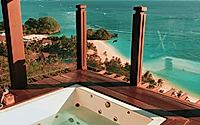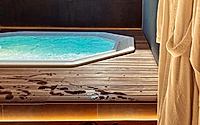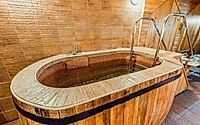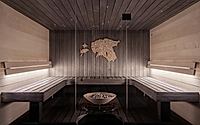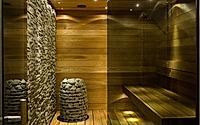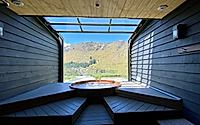Cost Considerations of Hot Tub Ownership
Owning a hot tub offers relaxation and therapeutic benefits, making it a coveted addition to many homes. However, the initial excitement can quickly be dampened by unforeseen costs. Understanding the financial implications of hot tub ownership can help potential buyers make informed decisions and budget accordingly.
The cost of a hot tub varies widely based on size, type, and features. Portable hot tubs can range from $400 to $6,000, with inflatable models at the lower end and hard-sided spas at the higher end. Entry-level hot tubs typically start around $4,000, offering basic features and easy installation. Meanwhile, value-priced models, which come with high-gloss acrylic shells and more advanced features, start at around $8,000. Premium and saltwater hot tubs can cost upwards of $13,000, boasting the best in terms of features, efficiency, and longevity.
Installation costs vary based on the type of hot tub and the complexity of the setup. Outdoor installations tend to be cheaper and simpler, while indoor installations may require significant home modifications to accommodate the weight, moisture, and heat of the hot tub.
Ongoing Maintenance and Operational Costs
When considering the purchase of a hot tub, understanding the nuances of ongoing maintenance and operational costs is essential for a comprehensive budget plan. These costs can significantly impact the total cost of ownership and influence the enjoyment and usability of your hot tub.
Water Quality Management
Maintaining water quality is paramount for ensuring the safety and longevity of your hot tub experience. This process involves a regular regimen of sanitizers, pH balancers, and shock treatments.
Sanitizers such as chlorine or bromine are crucial for keeping the water free from bacteria and other pathogens. The frequency and amount of sanitizer required will depend on the hot tub’s usage and the number of bathers.
pH Balancers play a critical role in maintaining the water’s acidity or alkalinity. The ideal pH level for hot tub water is between 7.4 and 7.6. Keeping the water within this range ensures that sanitizers work effectively and minimizes the risk of damage to the hot tub components.
Shock Treatments are used periodically to break down organic waste products from bathers, such as oils, sweat, and cosmetics. This process helps to keep the water clear and prevent unpleasant odors.
Filter Maintenance
Filters are the hot tub’s first line of defense against contaminants. They need to be cleaned regularly to maintain efficient operation and water clarity. A typical cleaning regimen involves:
- Rinsing the filters with water to remove loose debris.
- Soaking the filters in a specialized cleaning solution quarterly to break down oils and greases.
- Replacing the filters every 12-24 months, depending on their condition and the manufacturer’s recommendations.
Energy Consumption
The cost of energy is a significant portion of the hot tub’s operational expenses. Factors influencing energy consumption include:
Insulation: Hot tubs with high-quality insulation retain heat more effectively, reducing the energy required to maintain water temperature.
Climate: In colder climates, hot tubs require more energy to stay warm, especially if placed outdoors.
Frequency of Use: The more frequently a hot tub is used and heated from a lower temperature, the higher the energy consumption.
Energy-efficient models, though potentially more costly upfront, can offer significant savings over time through reduced electricity usage.
Saltwater Systems vs. Traditional Water Care
Saltwater systems have gained popularity due to their lower maintenance requirements and the softer feel of the water. These systems use a process called electrolysis to generate chlorine from salt, reducing the need for manual chlorine addition. However, the cell in the saltwater generator, which facilitates this process, typically needs replacement every 3 to 6 years, adding to the long-term maintenance costs.
In contrast, traditional water care systems rely on manual chemical treatments to maintain water quality. While this may require more frequent attention and adjustment, the initial setup and ongoing chemical costs can be lower than those associated with saltwater systems.
Ozone Systems
Ozone systems provide an additional layer of water treatment by introducing ozone gas into the water, which has strong oxidizing properties to reduce reliance on chemical sanitizers. While ozone systems can significantly reduce the amount of chemicals needed, they do not eliminate the need for them entirely. The initial cost of installing an ozone generator and potential maintenance or replacement costs should be considered.
Replacing Hot Tub Parts
Hot tub parts, like any mechanical components, are susceptible to wear and tear over time, leading to malfunctions that can affect the overall performance and enjoyment of the spa. The reality of owning a hot tub means being prepared for the eventuality of spa parts such as pumps, heaters, jets, and control systems beginning to show signs of failure. These issues can arise from a variety of causes, including regular use, improper water chemistry management, or simply the natural aging process of the materials. As these components degrade, they may lead to decreased efficiency, such as reduced heating capability, weaker water circulation, or less effective filtration, all of which detract from the hot tub experience.
Diagnosing these issues often requires professional expertise, as the symptoms of malfunctioning parts can be similar or misleading, making it difficult for a layperson to identify the exact cause without specialized knowledge or tools. This diagnostic process can incur costs, as service fees are typically charged for home visits by technicians. Following the diagnosis, purchasing replacement parts represents another financial consideration. While some parts might be relatively inexpensive, others, such as high-end pumps or digital control panels, can be quite costly. Moreover, the installation of these parts may also require professional assistance, adding further to the expense. These costs, while necessary for maintaining the hot tub’s functionality and extending its lifespan, can add up over time, highlighting the importance of factoring in maintenance and repair expenses when considering the overall investment in a hot tub.
Hidden Costs and Considerations
Before making a purchase, consider potential hidden costs. These might include the need for a sturdy base or platform, additional electrical work, and accessories like covers or steps. Energy efficiency is another crucial factor, as it directly impacts monthly operating expenses. Hot tubs with energy-efficient features such as full insulation, dedicated circulation pumps, and LED lighting can help keep energy costs lower.
While hot tub ownership offers undeniable benefits of relaxation and therapy, it is accompanied by a range of costs that extend far beyond the initial purchase price. Prospective owners should be mindful of the variance in upfront costs based on hot tub size, type, and features, as well as the significant installation expenses that may arise, particularly for indoor setups. Additionally, the ongoing maintenance and operational costs, including water quality management, filter maintenance, and energy consumption, play a crucial role in determining the total cost of ownership. Innovations such as saltwater and ozone systems offer alternatives to traditional water care practices but come with their own set of maintenance requirements and expenses. Hidden costs, such as the need for a sturdy base, additional electrical work, and energy-efficient features, can also impact the overall financial commitment. Therefore, it is imperative for potential buyers to conduct thorough research, consider all possible expenses, and budget accordingly to ensure that their hot tub provides the desired relaxation and therapeutic benefits without unwelcome financial surprises.
- by Matt Watts



